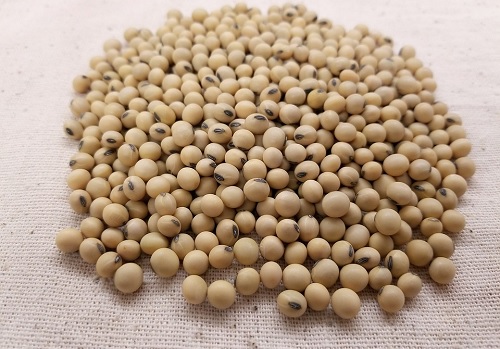U.S. Soybean Production Faces Decline Amid Global Oilseed Shifts By Amit Gupta , Kedia Advisory

U.S. oilseed production for 2024/25 is projected at 131.5 million tons, with increases in rapeseed, peanuts, and cottonseed, but soybean production decreases to 4.4 billion bushels. The U.S. soybean price forecast drops to $11.10 per bushel. Global sunflowerseed output declines due to adverse weather in Russia and Ukraine, while rapeseed production rises in Canada and the EU. China's soybean imports increase, contributing to a slight rise in global beginning stocks despite lower stocks in Argentina, Brazil, and Paraguay.
Highlights
U.S. Oilseed Production Increase: U.S. oilseed production for 2024/25 is projected at 131.5 million tons, an increase of 0.3 million tons from the previous month, with rises in rapeseed, peanuts, and cottonseed production.
Soybean Production Decrease: U.S. soybean production is projected at 4.4 billion bushels, down 15 million bushels due to a lower harvested area, which is forecast at 85.3 million acres, down 0.3 million acres from last month.
Stable Soybean Yield: The soybean yield forecast remains unchanged at 52.0 bushels per acre. Despite lower beginning stocks and reduced production, ending stocks for 2024/25 are projected at 435 million bushels, down 20 million from last month.
Soybean Price Forecast: The U.S. season-average soybean price for 2024/25 is forecasted at $11.10 per bushel, down $0.10 from the previous month's projection, reflecting market adjustments.
Soybean Meal and Oil Prices: Prices for soybean meal and oil remain unchanged at $330 per short ton and 42 cents per pound, respectively, indicating stable market conditions for these commodities.
Foreign Oilseed Production: Global oilseed production for 2024/25 is slightly reduced due to lower sunflowerseed output, mainly in Russia and Ukraine, offset by higher rapeseed production in Canada and the EU.
Sunflowerseed Production Decline: Sunflowerseed production is reduced due to lower yield prospects in Russia and Ukraine, caused by hot and dry weather conditions early in the growing season.
Increased Rapeseed Production: Foreign rapeseed production is increased, particularly in Canada and the EU, contributing to a slight overall increase in global oilseed production.
Foreign Soybean Production: Foreign soybean production remains unchanged, with increases in Canadian production offset by decreases in Russian production, indicating a balanced global output.
Global Soybean Beginning Stocks: Global soybean beginning stocks for 2024/25 are increased slightly, with higher stocks in China offsetting lower stocks in Argentina, Brazil, and Paraguay due to 2023/24 revisions.
Argentina's Soybean Production: Argentina’s soybean production for 2023/24 is revised down by 0.5 million tons to 49.5 million, based on data from Argentina’s Ministry of Agriculture, Livestock, and Fisheries.
China's Soybean Imports: China's soybean imports for 2023/24 are revised up by 3.0 million tons to 108.0 million, reflecting larger-than-anticipated arrivals expected in the fourth quarter of the marketing year.
Increased Exports: Soybean exports for Argentina, Brazil, Paraguay, Benin, and Canada are raised for 2023/24, indicating strong international demand and higher global trade volumes.
Global Soybean Stocks: With higher beginning stocks, lower production, and minor changes in usage for 2024/25, global soybean stocks are reduced by 0.1 million tons to 127.8 million, mainly due to lower stocks in several key countries.
Conclusion
The 2024/25 agricultural outlook reveals a mixed scenario for global oilseed production, with U.S. soybean production declining due to reduced harvested area, yet maintaining stable yields. Despite lower ending stocks and a minor price drop, the overall U.S. oilseed production sees a marginal increase. Globally, rapeseed and soybean production balance out reductions in sunflowerseed output. China's rising imports underscore its significant role in the global soybean market, while lower stocks in key South American countries hint at tighter global supplies.
Above views are of the author and not of the website kindly read disclaimer










Tag News

Quote on 2025 Trend and 2026 Outlook by Mr. Vikas Bhasin, Managing Director, Saya Group













